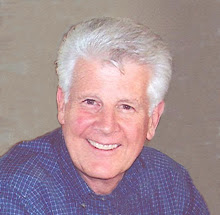As we left Dawson Creek, we headed south into Alberta Province. Now we are on Mountain Time and push our clocks ahead one hour. As we were leaving Dawson Creek, John wanted a picture of this sign. All I can say is one, I hope this guy’s wife gets an extra 25% of the sale proceeds for tolerating this sign, and two, anybody who can’t spell “within” - well it says something about them!
This is such pretty farm country. You could be going through any farm community in the Midwest of the US, with grain elevators and railroad crossings. The primary crops are oats, wheat, barley, and hay, which has just been harvested. Rapeseed is still evident, but they are having problems with bugs, and in order to save the crop, the pesticides would cost so much they wouldn’t make a profit. The newspaper says they aren’t rotating their crops enough, planting canola in successive years when it should be every third year.
The road is pretty = big clouds and blue sky above us. There is quite a large clear cut. We see signs for elk, moose and deer. I asked John why they didn’t have signs for bears. We have never seen a road sign saying watch for bears.
We are seeing the Canadian Rockies now, the foothills anyway.
We stop at Lake Musreau, a really pretty mountain lake with a campground full of kids dogs and lots of people having a good time. We take our chairs down to the lake after dinner and stay until it is almost dark. Then we went back and built a campfire, our first of the trip. It sounds weird to say that it was too cold up until now to build a fire, but its true! Late into the night, someone is telling kids ghost stories and we can hear them scream with delight as they get the wits scared out of them!
The next day, we are headed for Grande Cache. The areas we are entering have lots of places to stay and things to see, so it’s getting hard to pick. This is different than Alaska, where the roads were few and so were the towns, parks, etc. This territory was both a staging area for fur trapping, and a place to cache the furs until they could get to major trading areas. The trapping families whose descendants still live here were Iroquois from the East. Lumber, coal, oil and gas are now the major economies. We saw the coal factory right by the road, and veins of coal in the road cuts as we drove along. Grande Cache was only built in 1969 to serve a large Porcupine coal plant just north of it. We did stop at the visitors centre. We liked the feel of this area and would have stayed longer except the place we picked to spend the night is way down the road, and we got a late start.





No comments:
Post a Comment